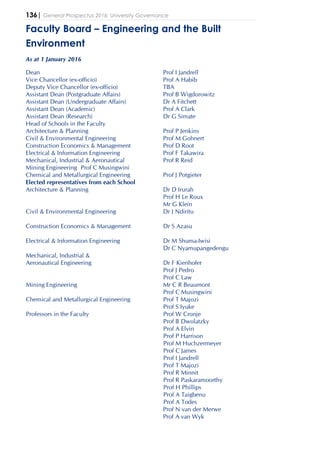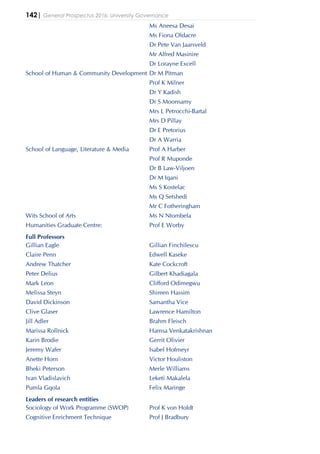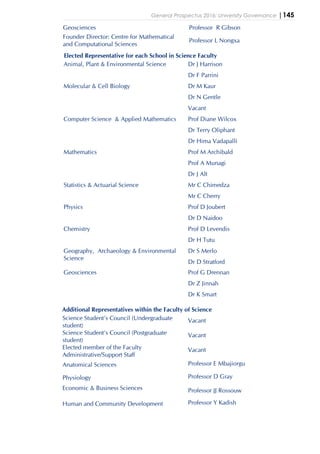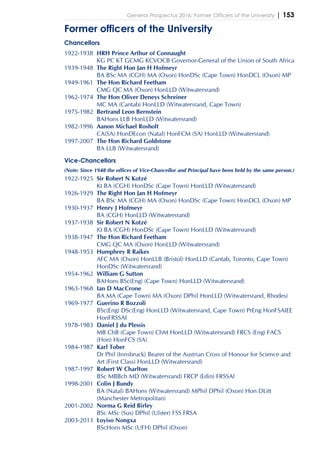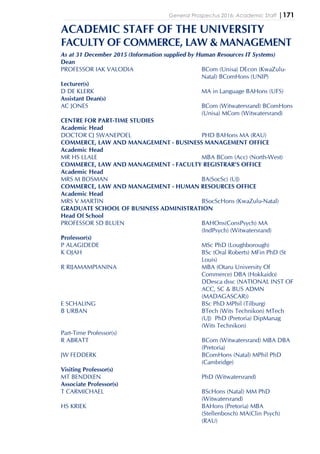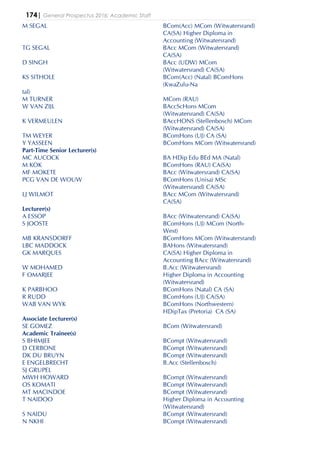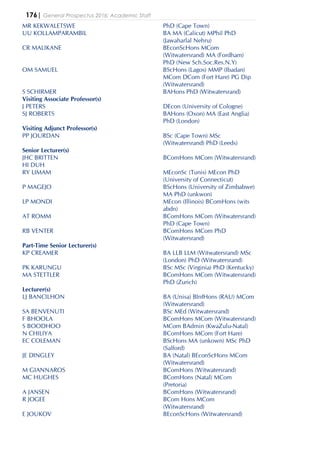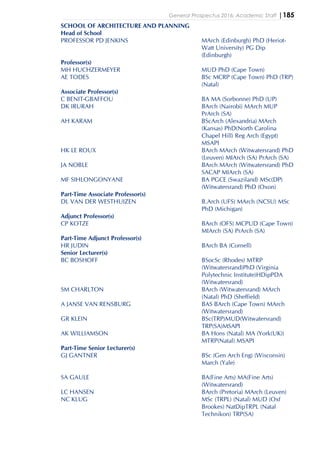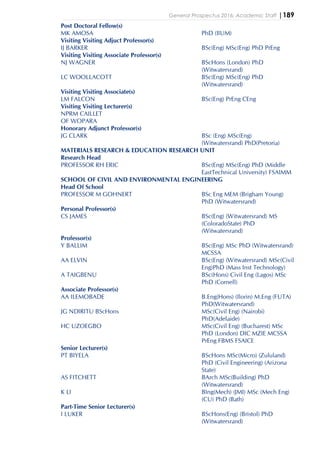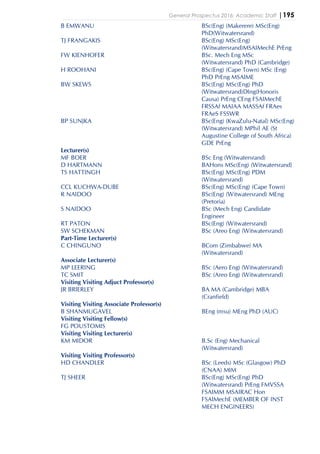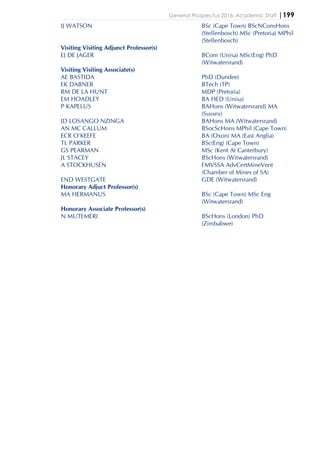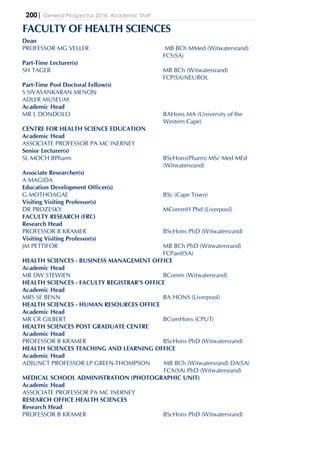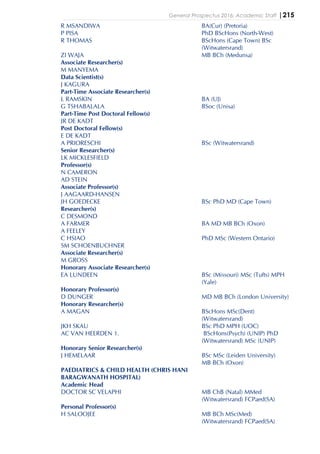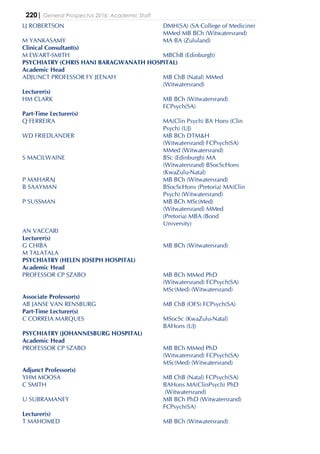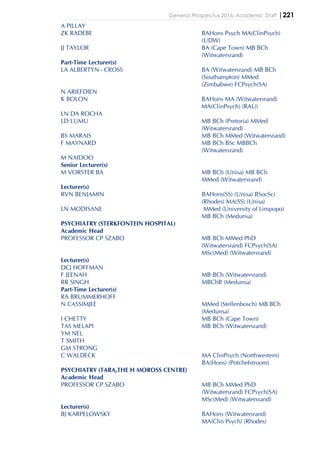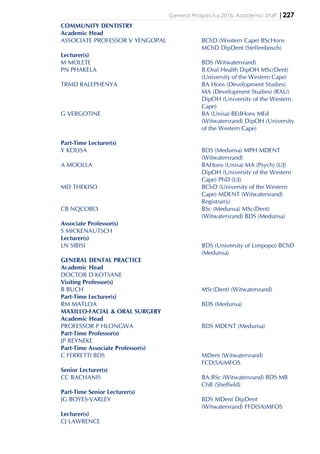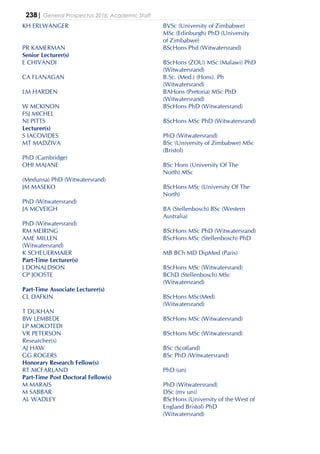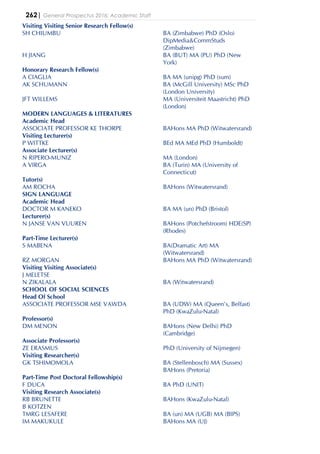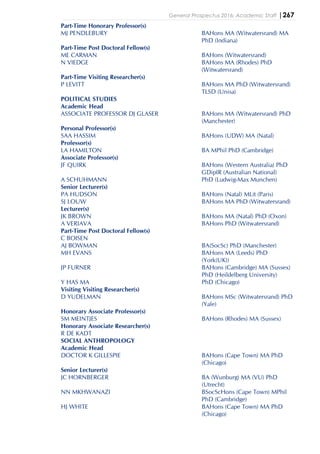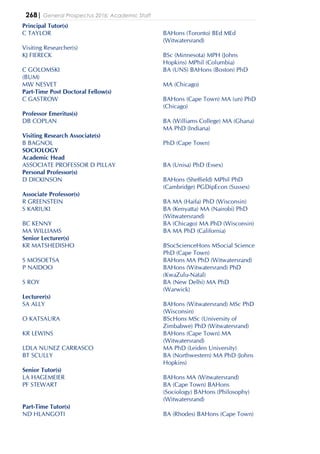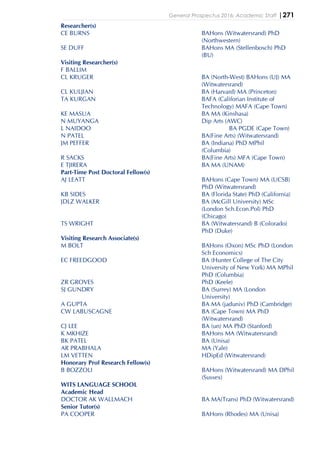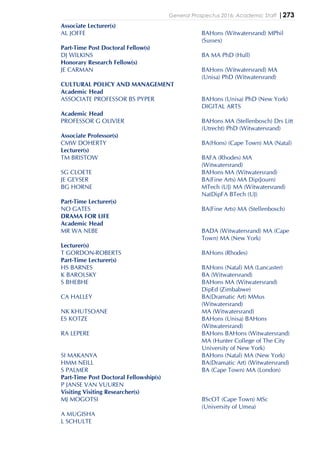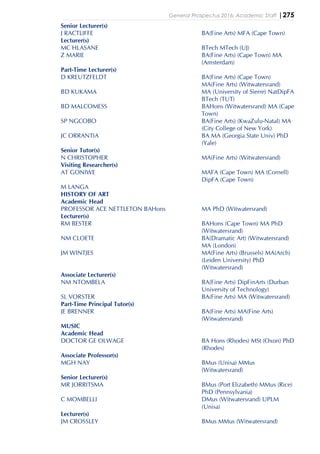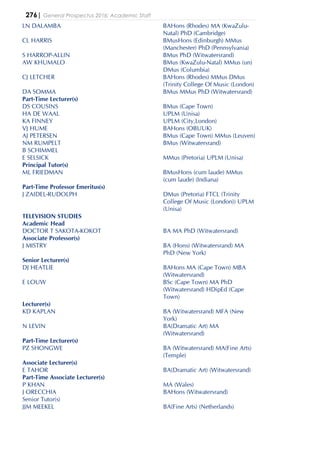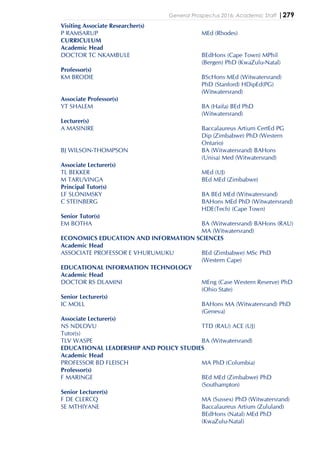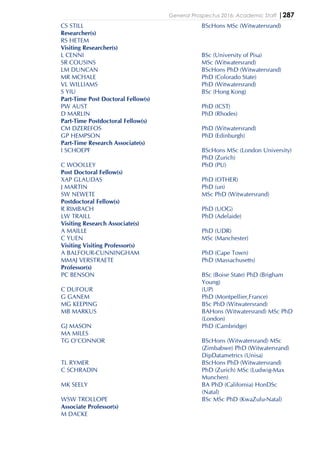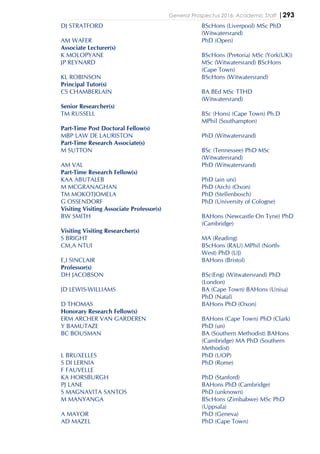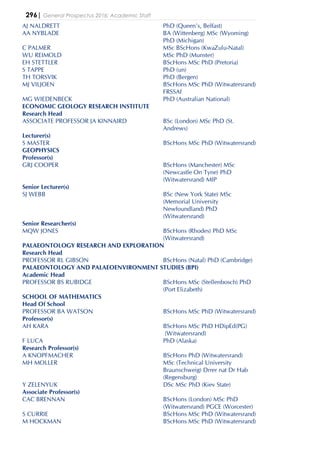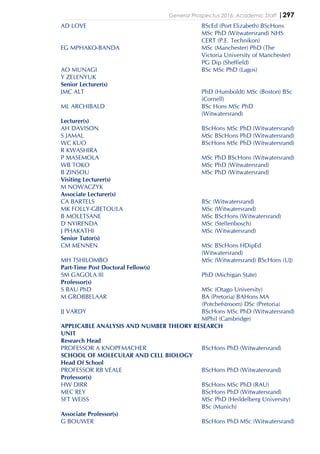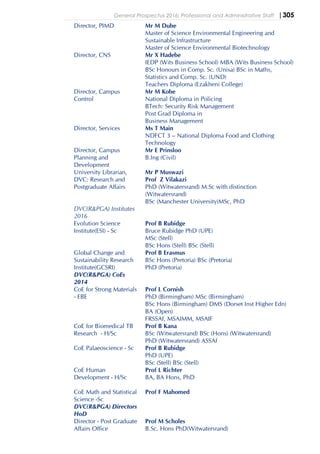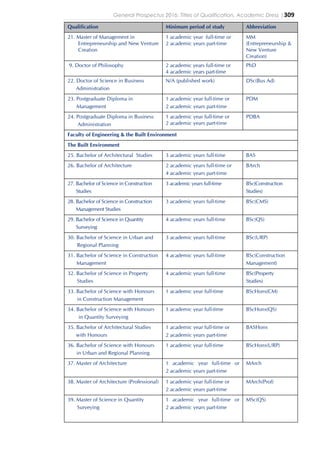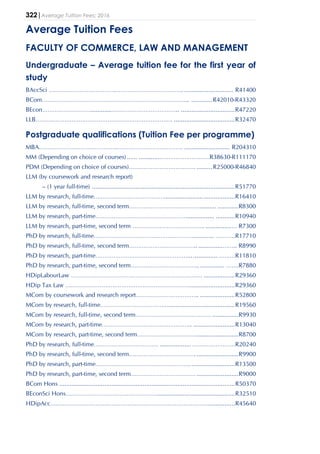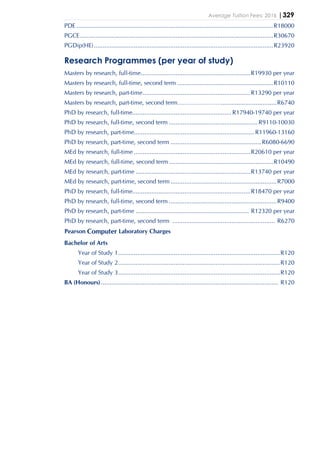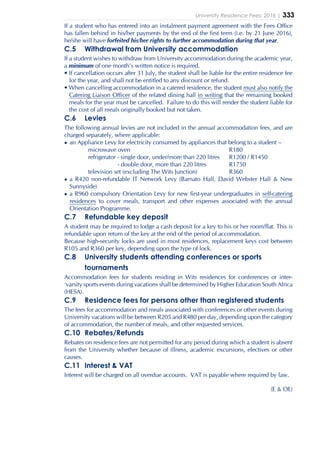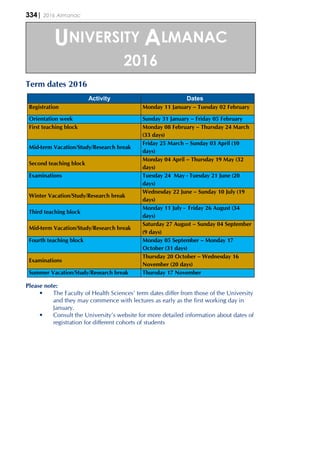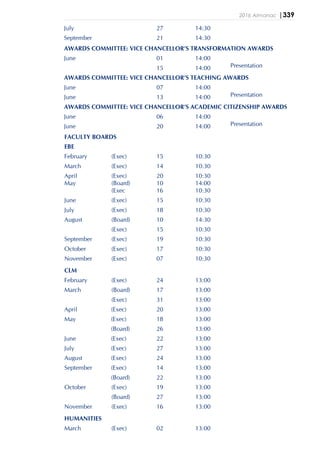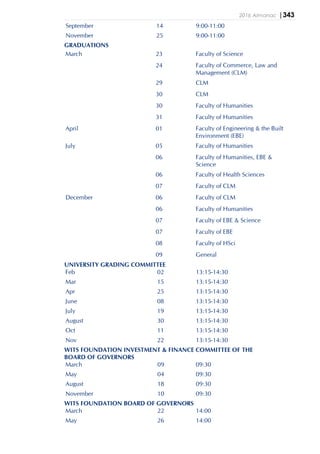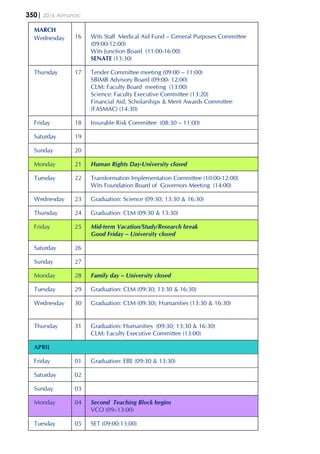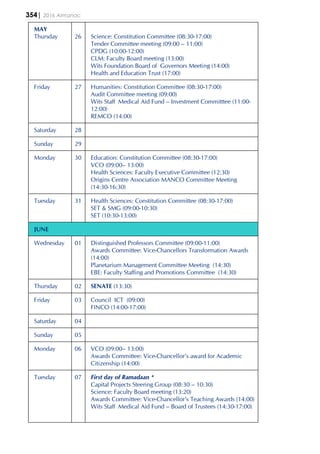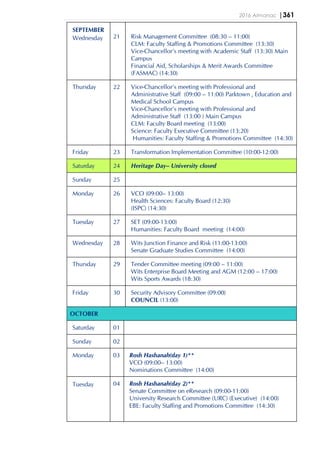This document provides general information about the University of the Witwatersrand (Wits) in Johannesburg, South Africa. It includes contact information, the university's mission and strategic aims, a brief history of Wits, an overview of degrees offered and faculties/schools. It also lists research centers, cultural facilities, publications, student statistics, awards, details of the university council and senate, and biographies of officers and professors. The prospectus aims to provide a comprehensive overview of Wits to prospective students and stakeholders.
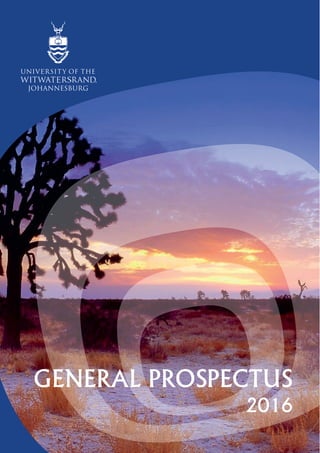




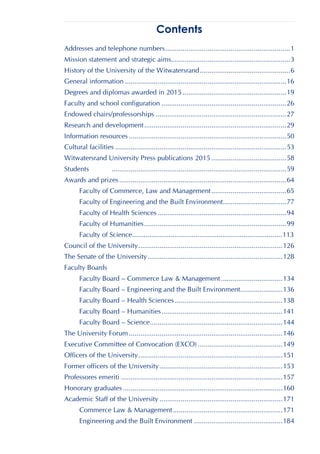





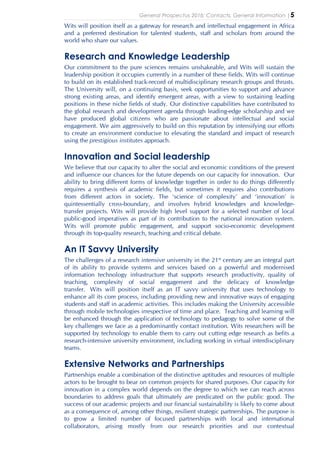





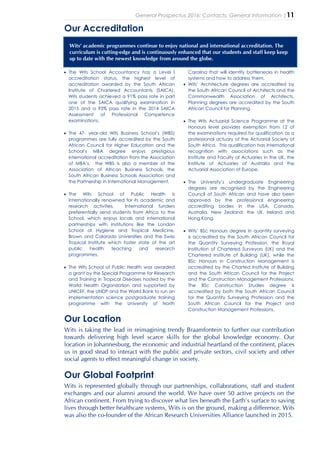








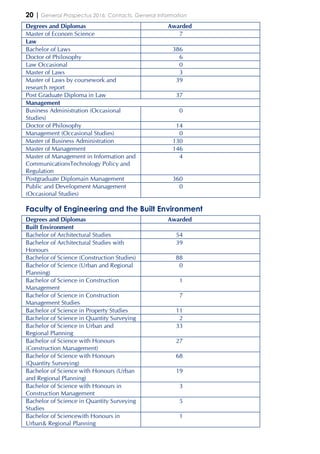
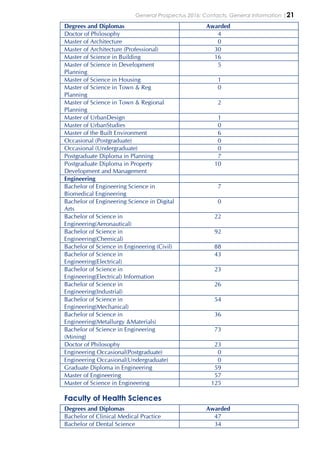







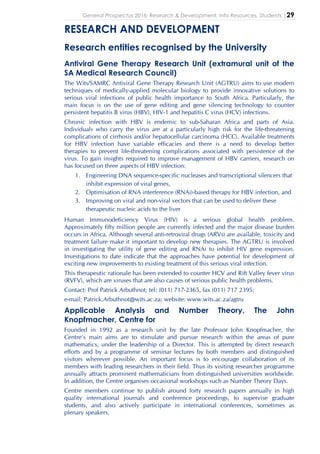








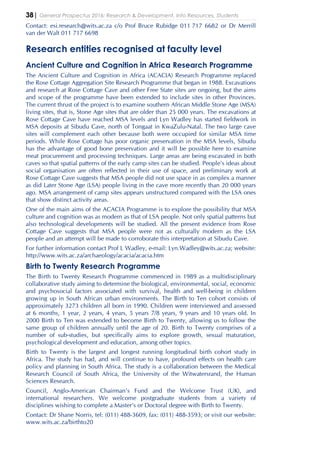


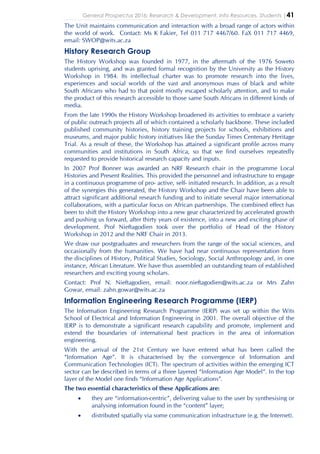




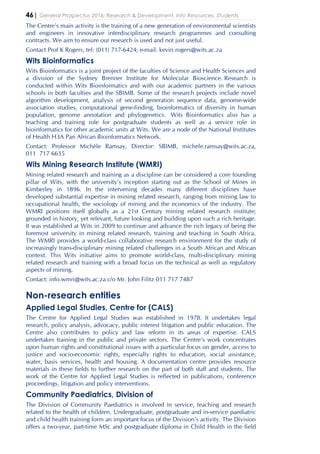

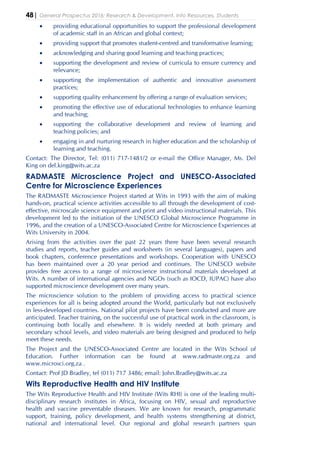
![General Prospectus 2016: Research & Development, Info Resources, Students |49
southern and eastern Africa, India, the US and the UK. Wits RHI is a UNAIDS
collaborating centre and a Medical Research Council collaborating centre for HIV/AIDS
and TB.
Founded in 1994 by Professor Helen Rees, Wits RHI forms part of the Faculty of Health
Sciences and is the largest research institute of the University of the Witwatersrand. We
are a donor-funded organisation with more than 30 grants under management. We
currently work in six provinces and employ over 500 staff.
Wits RHI has an expanding and successful research agenda, with more than 70 research
programmes underway. These include investigator-led clinical trials, network trials,
implementation science and community engagement to understand social, structural
and biological contexts and determinants of risk. By contributing to the evidence base,
Wits RHI positively influences national and international health policy and practice.
As a research institute, Wits RHI supports a growing cohort of African researchers
pursuing their Masters and PhD studies. We run manuscript writing workshops to
support emerging academics to publish in peer review journals, while our seminars
facilitate a vibrant learning environment and support academic rigour. We also offer
innovative learning programmes to improve practice, build research and publication
capacity, and produce an ever-increasing cohort of competent HIV clinicians. Our in-
service health care worker training ranges from clinical and psychosocial skills to data,
quality improvement and management skills.
Our head office is located in the Hugh Solomon Building, a heritage site within the
Hillbrow Health Precinct in Johannesburg. The vision of the Hillbrow Health Precinct is
to tackle health and support urban renewal in inner-city Johannesburg by providing the
community with access to quality health services. This project is championed by Wits
RHI, in partnership with the City of Johannesburg, the Gauteng Department of Health
and the private sector.
Contact Wits RHI; Tel: 011 3585500; Email: rhicomms@wrhi.ac.za; www.wrhi.ac.za
Wits Speech-Language and Hearing Clinic
The Wits Speech-Language and Hearing Clinic was established in 1936. It is a training
facility for students studying for the degree of Bachelor of Arts in Speech and Hearing
Therapy offered by the Discipline of Speech Pathology and Audiology, in the School of
Human and Community Development. The Clinic provides services to approximately
700 clients: babies, children and adults per year with various speech including
dysfluency (stuttering), voice, language, learning, swallowing and hearing
difficulties/disorders. The Clinic operates in well-equipped facilities in the Umthombo
Building on the Main University Campus but also has a number of satellite clinics. The
Clinic and its satellites cater for all ages and population groups from Gauteng and the
neighbouring provinces. Approximately 70 students per year are involved in completing
assessments and providing therapy under the supervision of highly qualified staff who
are Speech-Language and Hearing Therapists, registered with the Health Profession
Council of South Africa [HPCSA].
Contact: Mrs Pitsoe, Clinic Secretary; tel: (011) 717-4567
Wits Law Clinic
The clinic is situated on the West Campus near the Law Building. Clients are seen from
Monday to Friday between the hours of 08h00 and 12h00 throughout the year. The
staff and final-year law students consult and advise students, staff members and indigent
members of the public free of charge. However, representation is only undertaken if
the client qualifies for such representation in accordance with a Means Test. In
addition, the Law Clinic is limited by the type of legal work it undertakes, having regard
to certain restrictions placed upon it and having regard to its own resources. All
consultations and advice is undertaken under supervision of qualified attorneys.](https://image.slidesharecdn.com/12fd84c9-ce8c-48bc-8a66-d86258f0cd2b-160723104534/85/2016-General-Prospectus-for-Wits-56-320.jpg)



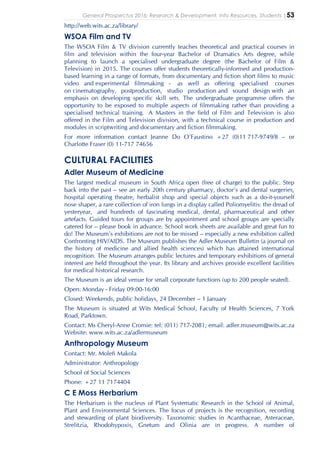

![General Prospectus 2016: Research & Development, Info Resources, Students |55
mission is to provide cutting-edge analysis and promote balanced dialogue on issues
crucial to Africa’s advancement and its engagement in a dynamic global context. It
attempts to do this through making constructive policy input, stimulating informed
public debate, and building leadership and research excellence in Africa. It also
produces sub-Saharan Africa’s only dedicated journal on foreign policy matters, the
South African Journal of International Affairs.
Chief Executive of the Institute: Ms Elizabeth Sidiropoulos. Chairman of the Smuts
Memorial Trust: Mr R Steyn.
Telephone: (011) 339-2021, fax: (011) 339-2154; e-mail: info@saiia.org.za;
website: www.saiia.org.za
Museum of Obstetrics & Gynaecology
The Museum of Obsterics and Gynaecology has been moved to larger venue in area
174 in the Department of Obstetrics and Gynaecology and is at present being
reorganised.
The Museum contains approximately 200 selected specimens illustrating gynaecological
diseases and 150 selected specimens illustrating conditions related to pregnancy. There
is a display of instruments of historical interest including the first ultrasound machine
used in Johannesburg and an array of forceps, speculums and other instruments used
over the previous century.
There are demonstrations of contraceptive methods, physiology of menstruation and of
early pregnancy. There is also a tape-slide and video-cassette programme for self-use for
student teaching.
Rogene Beukes – Rogene.beukes@wits.ac.za or Lucas Makofane on 011 488 3174
Mathetje.Makofane@wits.ac.za
Palaeontology Museum
The museum has exciting displays of dinosaurs, mammal-like [-] reptiles and other weird
and extinct reptiles animals and land plants of the past. An innovative exhibition
portrays [the evolutionary significance and] the environment in which these fossils lived.
A section of the museum deals with cave deposits, fossil ape-men and the ancestry of
humans. Life-size animated (robotic) reconstructions of dinosaurs and mammal-like
reptiles greet visitors as they enter the museum. The museum is open weekdays from
08:00 to 16:00. Exciting hands-on activities and tours are offered to school learners of
all ages.
Telephone: (011) 717-6682; fax: (011) [403-1423] 717 6694, e-mail:
ian.mckay@wits.ac.za
Planetarium
The Planetarium first opened its doors on 12 October 1960. Since then more than three
million people from nursery school groups through primary, high school, college and
university students, as well as the public have been entertained and educated with a
variety of lectures and programmes. Star-charts, telescopes and astronomy books are all
available at the Planetarium Shop.
The Planetarium runs public shows every week; for details see www.planetarium.co.za
Schools visit by arrangement Tuesdays to Fridays.
For all enquiries telephone (011) 717-1390 all hours, fax: (011) 339-2926.
Wits Art Museum (WAM)
Wits Art Museum is home to a collection of nearly 10 000 works of art. The collections
have been built up at Wits University since the late 1920’s and span the African](https://image.slidesharecdn.com/12fd84c9-ce8c-48bc-8a66-d86258f0cd2b-160723104534/85/2016-General-Prospectus-for-Wits-62-320.jpg)


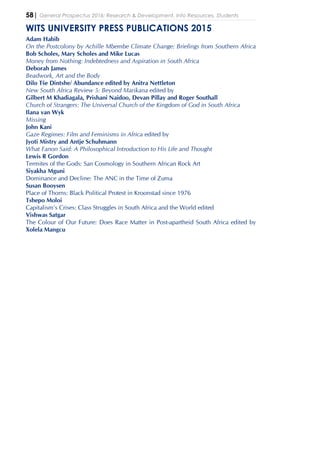
















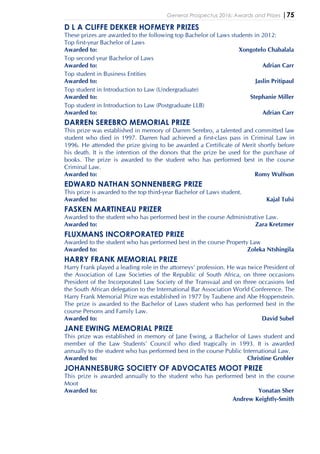













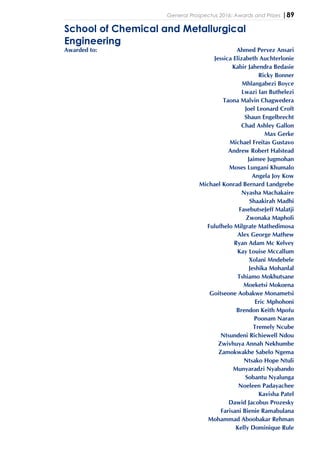



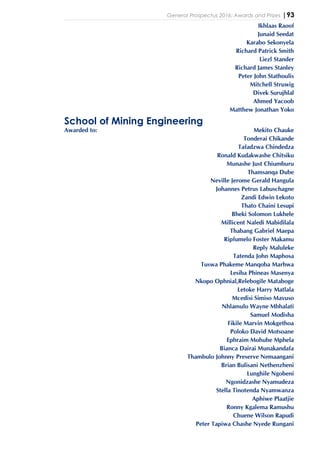





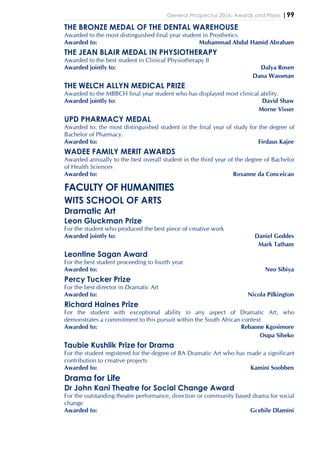




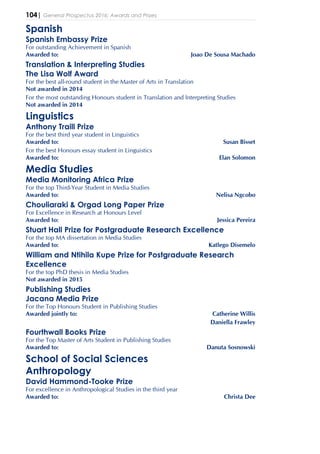













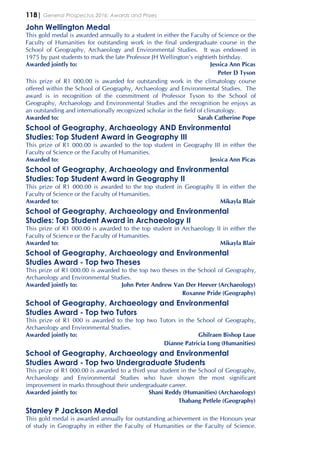


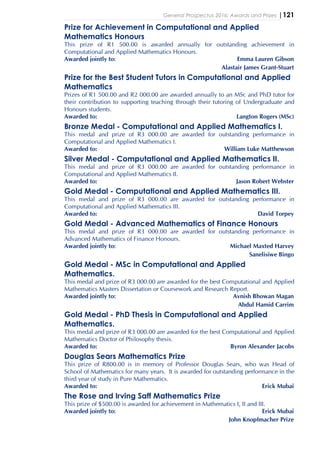




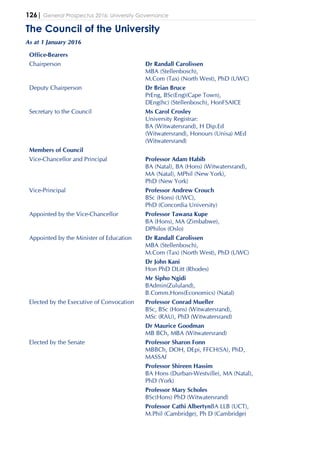

![128| General Prospectus 2016: University Governance
The Senate of the University
As at 1 January 2016
Office-Bearers
Chairperson – Professor A Habib (Vice-Chancellor and Principal)
[Also listed below as full professor]
Deputy Chairperson – Professor H Marques (Faculty Dean: Science)
[Also listed below as full professor]
Secretary of the Senate – Ms C Crosley (University Registrar)
[Also listed below as a member]
Members of Senate
Membership in terms of section 29(1)(a) of the University Statute:
Vice-Chancellor and Principal – Professor A Habib [Also listed below as full
professor]
Membership in terms of section 29(1)(b) of the University Statute:
V ice-Principal – Professor A Crouch [Also listed below as Deputy
Vice-Chancellor: Academic and full professor]
Membership in terms of section 29(1)(c) of the University Statute:
Deputy Vice-Chancellors – Professor A Crouch (Academic) [Also listed below as
full professor]
– Professor Z Vilakazi (Research and Post Graduate
Affairs) [Also listed below as full professor]
– Professor T Kupe (Advancement, Human Resources
and Transformation) [Associate Professor]
– Professor B Lacquet (Knowledge and Information
Management, Infrastructure and Operations) [Also
listed below as full professor]
Executive Directors – Ms L Jarvis (Chief Financial Officer)
– Dr P Dube (Dean: Student Affairs)
Members elected by the Council in terms of section 29(1)(d) of the University Statute:
– Dr B Bruce
– Professor C Mueller
Membership in terms of section 29(1)(e) of the University Statute:
Full Professors and Heads, Acting Heads of Schools](https://image.slidesharecdn.com/12fd84c9-ce8c-48bc-8a66-d86258f0cd2b-160723104534/85/2016-General-Prospectus-for-Wits-135-320.jpg)







